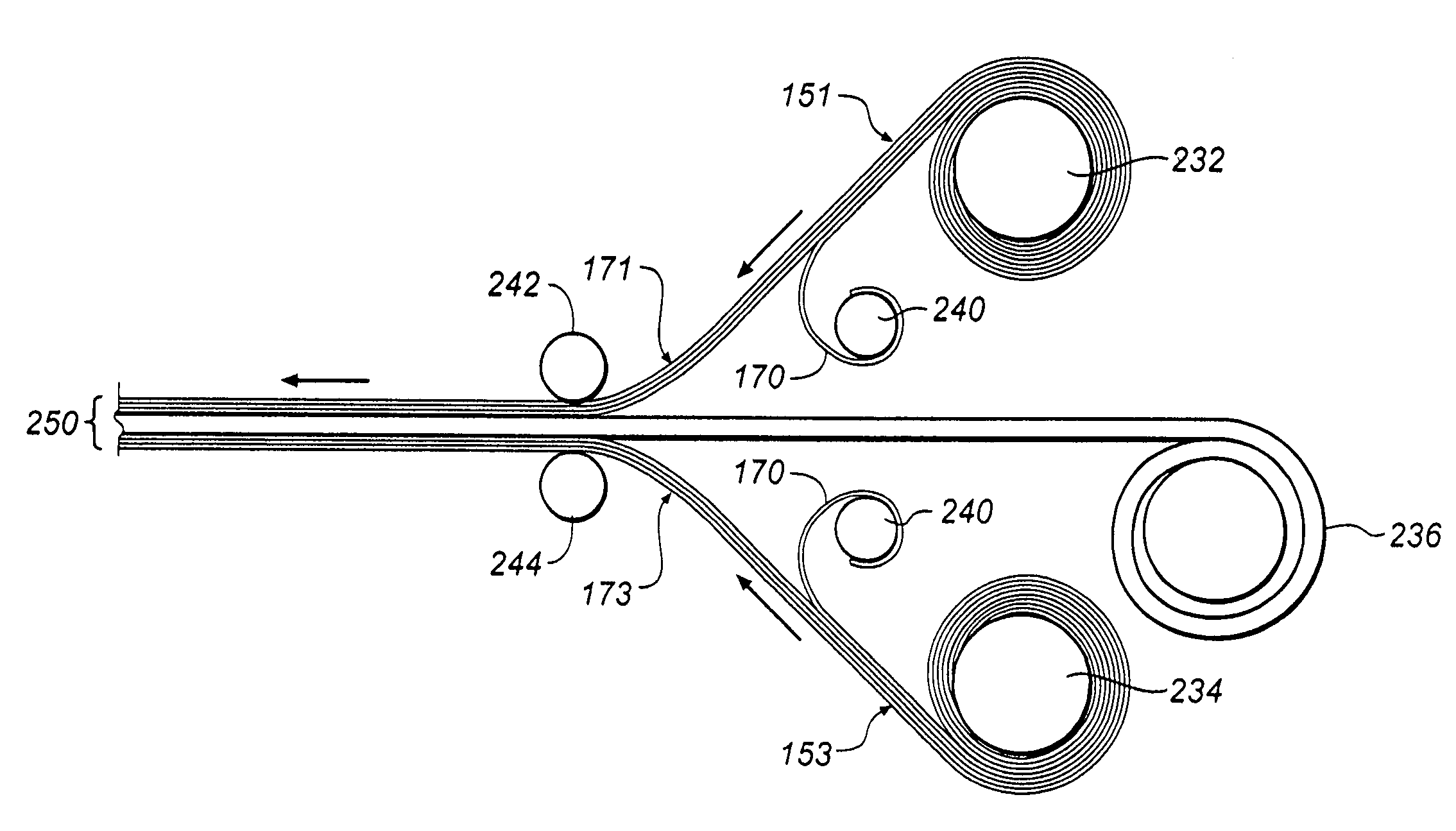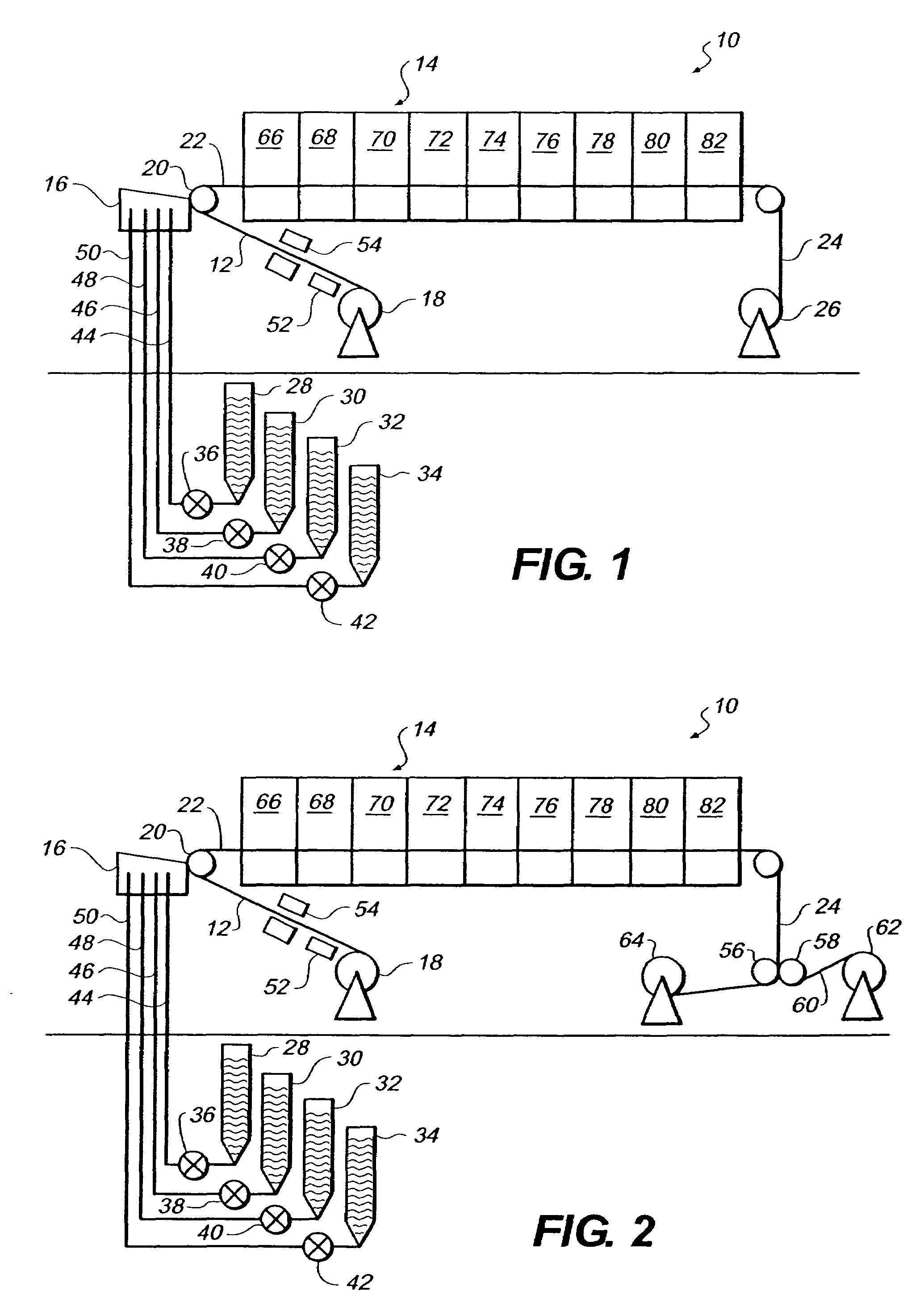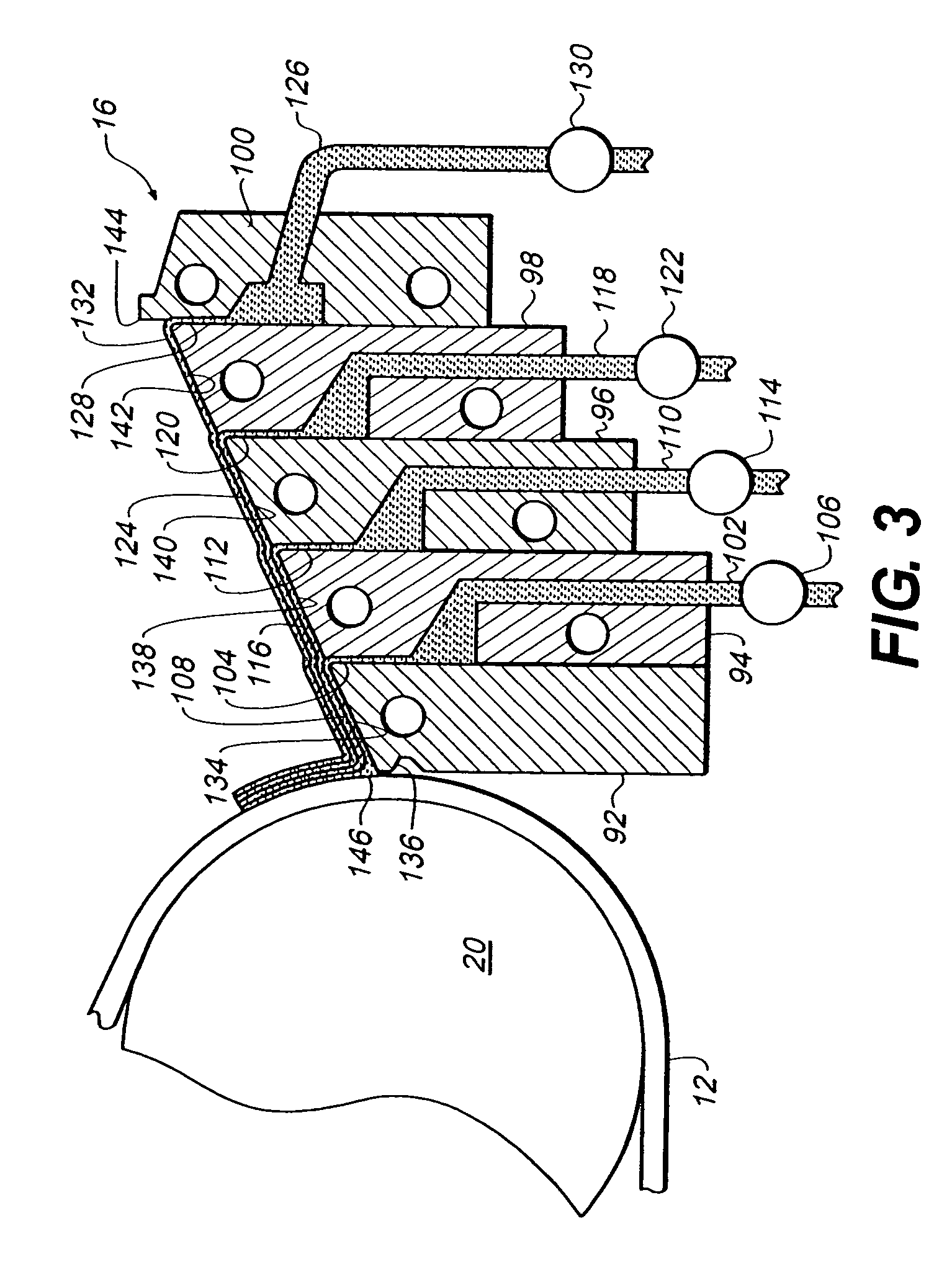Polarizing plate laminated with an improved glue composition and a method of manufacturing the same
a technology of polarizing plate and composition, which is applied in the direction of polarizing elements, adhesive processes with surface pretreatment, synthetic resin layered products, etc., can solve the problems of dimensional instability, high cost, and high cost of pva films used to form polarizers, and achieve improved interlayer wet adhesion.
- Summary
- Abstract
- Description
- Claims
- Application Information
AI Technical Summary
Benefits of technology
Problems solved by technology
Method used
Image
Examples
example 1
[0183]A 100 micrometer thick poly(ethylene terephthalate) (PET) carrier substrate having an antistatic backing layer (backside) is coated on its front surface with a layer promoting adhesion to PVA film comprising Cervol® 205 PVA (poly(vinyl alcohol) having a degree of hydrolysis of about 88-89%, available from Celanese Corp.) having a dry coating weight of about 75 mg / ft2 (750 mg / m2), and Neorez® R-600 (polyurethane dispersion from NeoResins Inc.) having a coating weight of about 25 mg / ft2 (250 mg / m2). The dried layer is then overcoated with a triacetyl cellulose (TAC) formulation comprising three layers: a surface layer comprising CA-438-80S (triacetyl cellulose from Eastman Chemical) having a dry coating weight of about 208 mg / ft2 (2080 mg / m2), diethyl phthalate having a dry coating weight of about 20.8 mg / ft2 (208 mg / m2), and Surflon® S-8405-S50 (a fluorinated surfactant from Semi Chemical Co. Ltd) having a dry coating weight of about 21 mg / ft2 (210 mg / m2); a middle layer compri...
example 2
[0186]Example 2 was prepared in a similar manner as Example 1 except that the tie layer comprised a 47.5:47.5:5 mixture of Carboset® 525 (Noveon Inc.), poly(vinyl acetate-co-crotonic acid) (Sigma-Aldrich), and trimethyl borate. The Carboset® 525 having an acid number of about 80 and the poly(vinyl acetate-co-crotonic acid) having an acid number of about 65. The adhesion between the TAC film and the PVA film was excellent.
example 6
[0190]A 100 micrometer thick poly(ethylene terephthalate) (PET) carrier substrate having an antistatic backing layer (backside) is coated on its front surface with a layer promoting adhesion to PVA film comprising Cervol® 205 PVA (poly(vinyl alcohol) having a degree of hydrolysis of about 88-89%, available from Celanese Corp.) having a dry coating weight of about 75 mg / ft2 (750 mg / m2), and Neorez® R-600 (from NeoResins Inc.) having a coating weight of about 25 mg / ft2 (250 mg / m2). The dried layer is then overcoated with a tie layer comprising poly(ethyl methacrylate-co-methacrylic acid) (acid number 130) having a dry coating weight of about 100 mg / ft2 (1000 mg / m2). The tie layer is overcoated with a triacetyl cellulose (TAC) formulation comprising three layers: a surface layer comprising CA-438-80S (triacetyl cellulose from Eastman Chemical) having a dry coating weight of about 208 mg / ft2 (2080 mg / m2), dihexyl cyclohexane dicarboxylate having a dry coating weight of about 20.8 mg / ft2...
PUM
| Property | Measurement | Unit |
|---|---|---|
| melting temperature | aaaaa | aaaaa |
| thickness | aaaaa | aaaaa |
| thickness | aaaaa | aaaaa |
Abstract
Description
Claims
Application Information
 Login to View More
Login to View More - R&D
- Intellectual Property
- Life Sciences
- Materials
- Tech Scout
- Unparalleled Data Quality
- Higher Quality Content
- 60% Fewer Hallucinations
Browse by: Latest US Patents, China's latest patents, Technical Efficacy Thesaurus, Application Domain, Technology Topic, Popular Technical Reports.
© 2025 PatSnap. All rights reserved.Legal|Privacy policy|Modern Slavery Act Transparency Statement|Sitemap|About US| Contact US: help@patsnap.com



